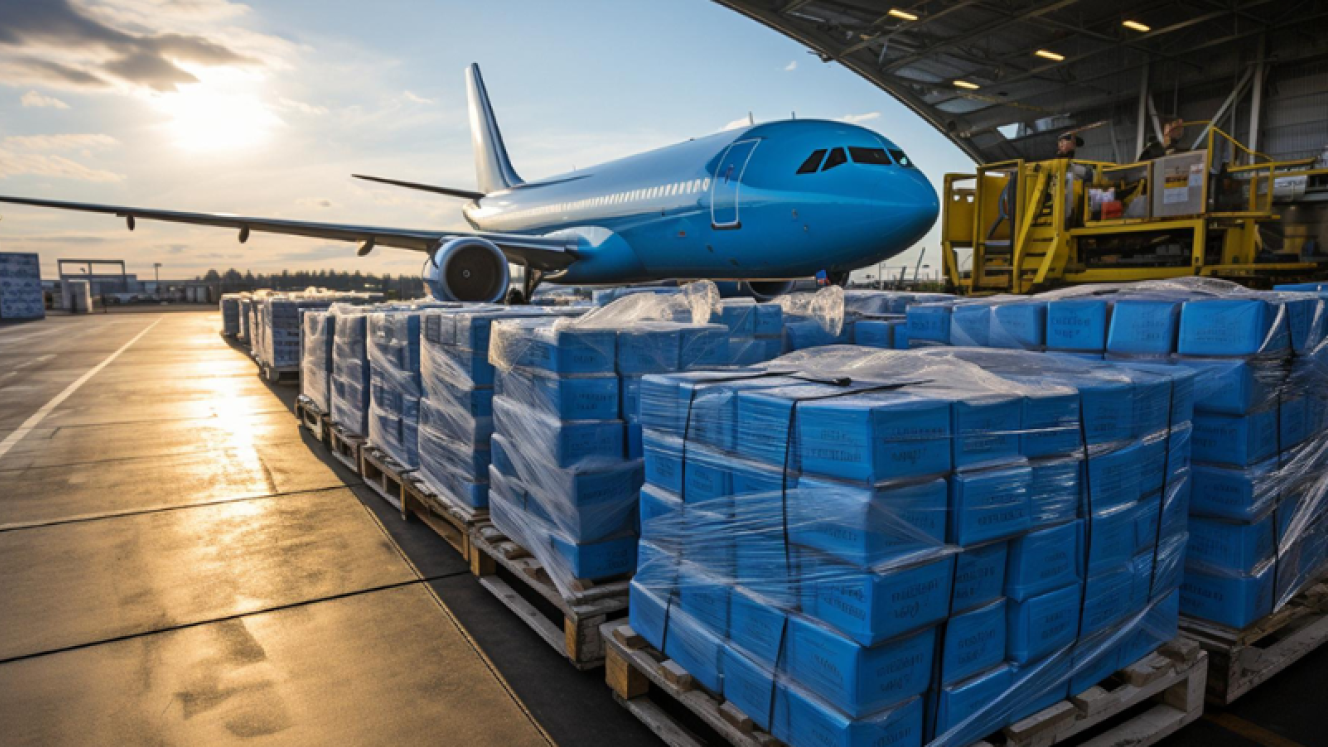With the removal of the de minimis threshold for shipments from China into the United States taking effect on May 1, the airfreight industry is bracing for uncertain times.
Global air cargo volumes grew 4% year-on-year in April, but the new ruling, combined with massive uncertainty over the macroeconomic outlook, is expected to dramatically disrupt e-commerce volumes in the coming weeks.
The question for the air cargo market in 2025 has become ‘how bad will it be?’, according to industry analysts Xeneta.
Over the past 10 years, US consumers have paid no duty on shipments valued at $800 or less, causing the volume of cross-border packages into the US to soar to some 1.35 billion annually.
Similar (but lower) exemptions exist in other countries.
However, low-value products sourced from China and Hong Kong into the US are now subject to 145% new tariffs, with products sourced from postal services paying a different 120% duty on the value of the goods or a $100 flat fee, rising to $200 on June 1, the analyst points out.
Approximately 50% of air cargo shipments on the China–US route are e-commerce, accounting for around 6% of global volumes.
A sharp drop in demand is likely to challenge carriers' capacity planning, with early signs already pointing to freighter flight cancellations and potential redeployments to other trade lanes.
One of China’s e-commerce behemoths, Temu, has already responded by dramatically reducing its advertising spend in the US, but the outlook for global air cargo – so dependent on e-commerce income for the last two to three years since Covid – extends far beyond the US border, says Niall van de Wouw, Xeneta’s chief airfreight officer.
“This is a double-edged sword. A decrease in demand on one of the key airfreight lanes between Asia Pacific and North America will have a big impact, but so too will the redeployment of capacity at a global level,” he said.
“This may be a year when we grow weary of seeing the word ‘unprecedented’ in market performance statements. The macroeconomic picture will depend on how long the uncertainty lasts and what will be at the end of it, but the outlook currently looks quite daunting.
“This is not about one industry being affected. This is about major trade lanes being affected, and we haven’t seen anything on this scale before,” Van de Wouw added.
In April, global air cargo spot rates rose just 3% year-on-year (y-o-y), a second consecutive month of only a single-digit increase. This slowdown aligns with weaker demand trends. Adding to the downward pressure on rates, jet fuel prices fell -24% y-o-y in the first three weeks of April. This drop, driven by ongoing economic and geopolitical uncertainties, likely played a role in tempering overall spot rate growth.
Meanwhile, available capacity increased modestly by 3% compared to April 2024, and the dynamic load factor declined three percentage points month-on-month to 57%. Dynamic load factor is Xeneta’s measurement of capacity utilisation based on volume and weight of cargo flown alongside available capacity.
US tariff measures implemented on the country’s so-called Liberation Day on April 2 prompted a rush of air shipments from several Asian countries to North America. This led to double-digit increases in both volume and spot rates.
Notably, spot rates from Southeast Asia to North America jumped 13% month-on-month, while those from Northeast Asia rose 10%. However, these gains began reversing in the second half of April following the announcement of a 90-day tariff pause and 145% retaliatory tariffs on China, according to Van de Wouw.
The largest monthly rate surge was observed on the North America–Northeast Asia corridor, rising 14%. This was largely driven by shippers rushing exports to China and Hong Kong amid fears of reciprocal tariffs.
“The de minimis change in the US is going to disrupt the market and we’ll see its impact in the May numbers. I would say be prepared for a logistical mess.
“After double-digit air cargo market demand growth in 2024, forecasts going into 2025 predicted another 4-6% growth y-o-y. Any attempts to reassess the outlook in the current market conditions would be “meaningless,” he said.
The likelihood of lower airfreight rates is good news for shippers and forwarders, but if shippers can’t sell their goods because of tariffs, that’s bad news for the macroeconomic picture and the need for airfreight. For most airfreight shipments, lower rates will not compensate for the tariffs that will have to be paid.
“Therefore, it’s still a waiting game to see how long this process takes and the order of magnitude of which the tariffs will stick,” Van de Wouw said.













